Species Information
Verians
Name Origin
These animals first evolved on the continent of Thoveria, thus being known to other species as Thoverians. Over time as the species grew more common, the name was shortened to Verians.
Biology
Verians are warm-blooded mammals that produce milk but lay eggs. The most common clutch size is between 1-4 eggs.
All Verians possess the same traits; a canine-like snout and ears, and fur tufts in similar places.
All breeds are capable of possessing the same genetics, including physical mutations and appearances.
Verian skin has a soft, velvety texture. Their skin is able to repel liquids, so most common Verians will have no problem getting around in wet enviornments. Those with certain body mutations or other coat types often avoid water, on the other hand, as their extra coating of feathers or fur mean it takes far longer for them to dry off.
Dimorphism - Female Verians tend to be larger than males, but they otherwise do not display any physical differences.
Habitat
Verians live all over the Thoverian territories, including the colder climates. Over time, some Verians developed some resistance to extreme heat and cold, allowing them to occupy and even prefer some regions over others. The furred variant is suspected to have developed on the icy tundra. The bald variant is known to have originated from hot deserts.
Larger species of Verians originate from relatively flat, open areas such as plains, tundras, or the edges of forests. Smaller species, on the other hand, originate from areas of heavier cover, such as swamps, forests, and jungles.
Diet
Meat and fish are the staple of a Verian's diet, though over time they have developed a much more omnivorous diet than their prehistoric ancestors. Still, they must consume a large amount of food to be considered healthy. Only a few breeds have been able to transition into primarily or fully herbivorous diets.
Reproduction
Although Verians have no true breeding season, old instincts and traditions mean that most Verians mate in early spring, laying their eggs shortly after. All Verians can interbreed, but most often pairings are between two Verians of the same breed. If they are not, any offspring they produce will appear to be almost entirely one breed over the other. It is remarkably rare that genetic hybrids appear starkly different from their parents in stature, size, or traits.
Each breed tends to produce different clutch sizes, with Suchus pairings producing the largest clutches on average and Herculeans producing the smallest. The exact origins of why this occurs is unknown, but it is suspected that the size of smaller breeds allowed prehistoric Verians a larger number of those breeds. Now, when hybridization is more common, it is also known that the breed with the smaller nest size will always be the one that determines the approximate number of eggs.
When pups hatch, they survive on a diet of fish, meat, and their mothers' milk. Rich in protein, fat, and other nutrients needed to sustain rapid growth, these animals only take approximately three months to grow half their final height and weight. At this point, prehistoric Verians were able to fend for themselves. It takes two years to reach full size, growth slowing down without the added benefits of milk. At about 5 years, most breeds of Verians are sexually mature, with larger breeds taking slightly longer than smaller breeds.
Verian Breeds
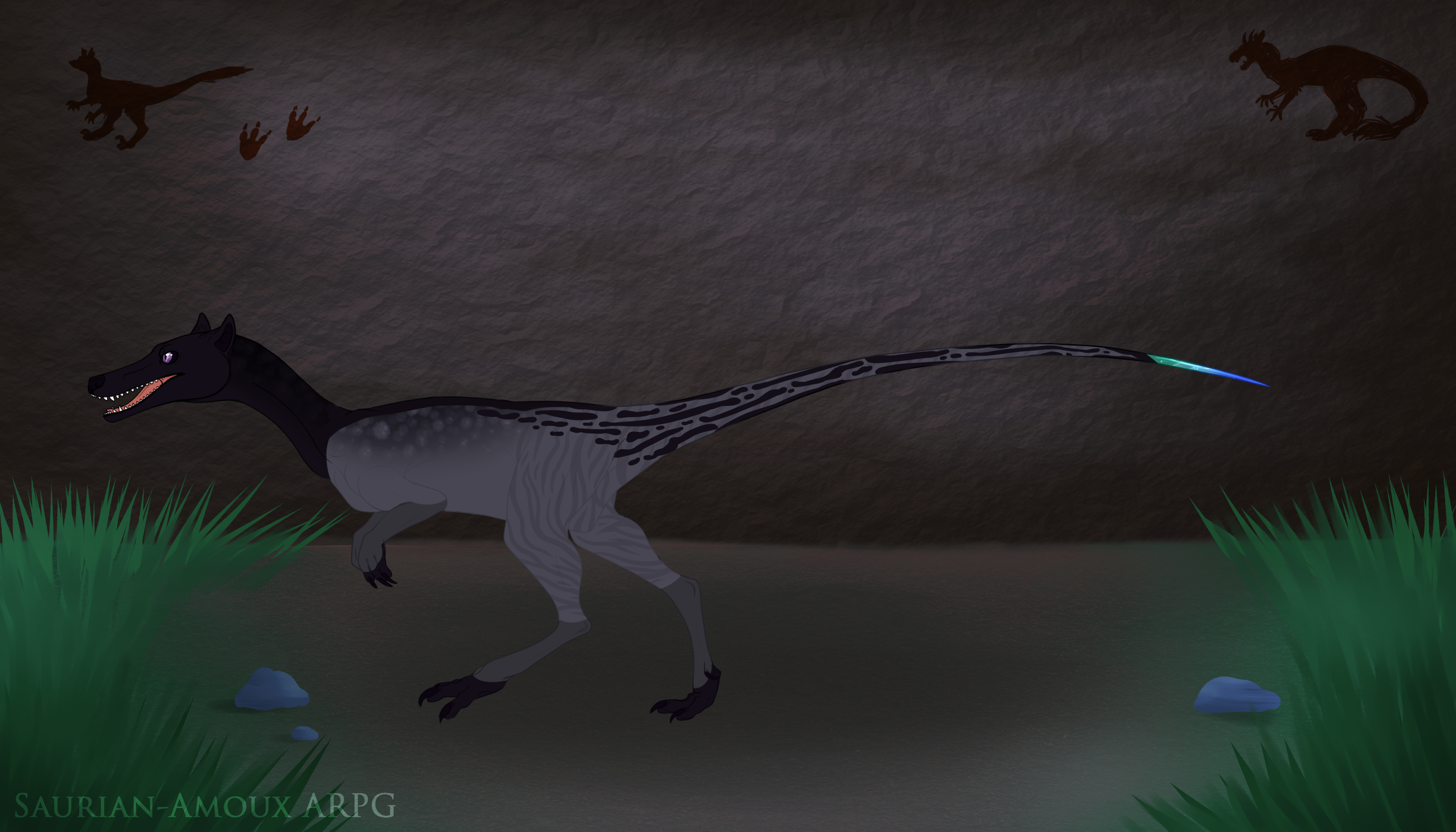
Compy
Theroas compsophysis
Compies are the smallest and lightest known breed of Verians. Known to create vast networks of allied family structures, they are almost never seen without their own kind. They have a stereotype as being relatively scatterbrained daredevils, as in ancient history they survived primarily through numbers over intelligence or strength. Due to their size and numbers, they were sometimes seen as prey by much larger breeds if times became particularly harsh. Social hostility still remains between many Compies and Herculeans.
- Average Height: 5 feet
- Smallest Height: 3 feet
- Tallest Height: 6 feet
- Clutch Size: 1-4 eggs
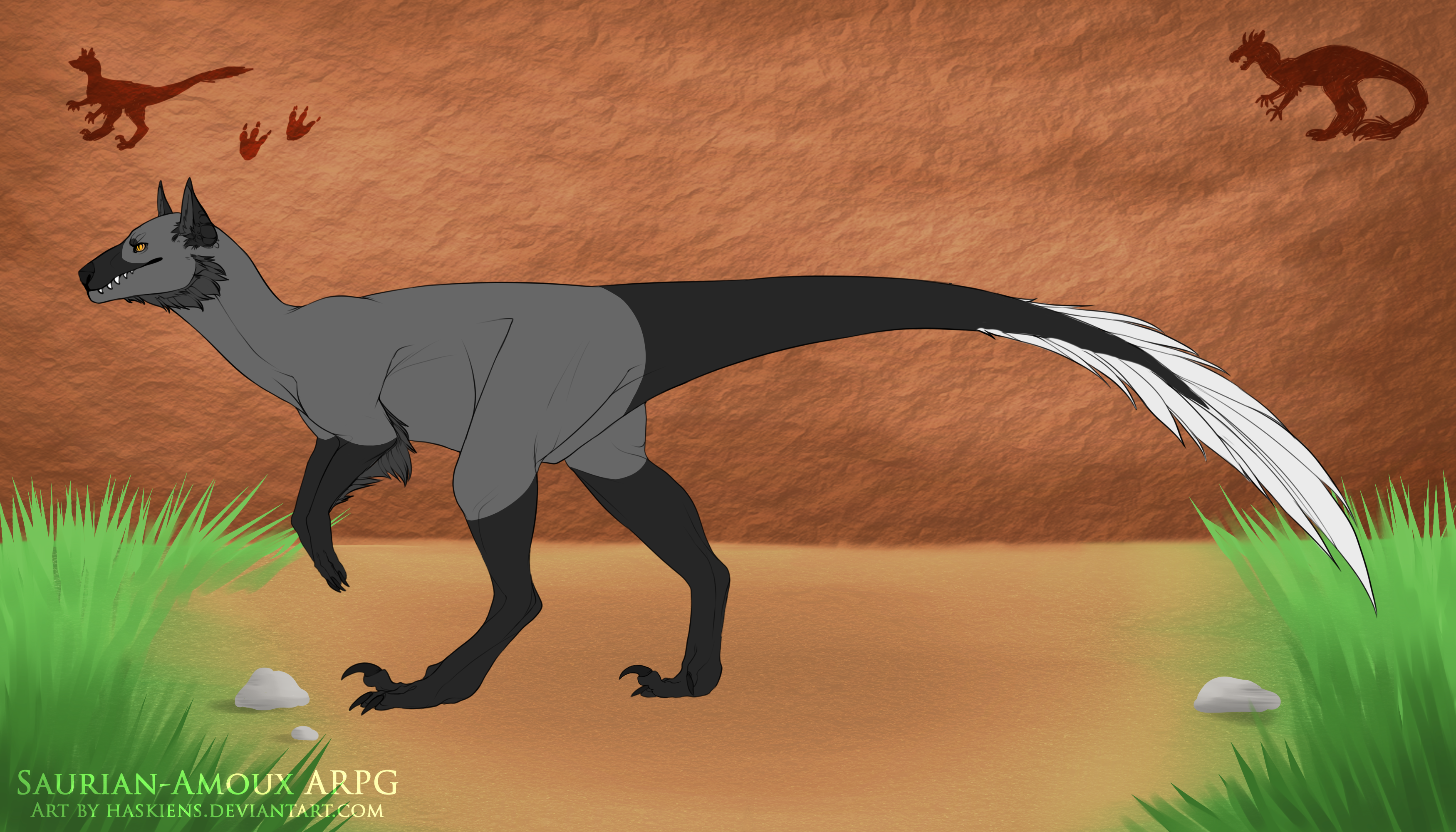
Raptor
Theroas dromaeo
Raptors are known to have been one of the first breeds of Verians which learned how to utilize tools and work together on a more cohesive level. The stereotype is that these are the smartest animals from Thoveria, though it is an unproved claim. Still, it is true that these are some of the most social Verians and often form small tight knit families, packs, and clans. They are also the most rambunctious and energetic of the breeds, on average, which means raptors often seem to have endless ability to work on projects and goals.
- Average Height: 6 feet
- Smallest Height: 5 feet
- Tallest Height: 7 feet
- Clutch Size: 1-3 eggs
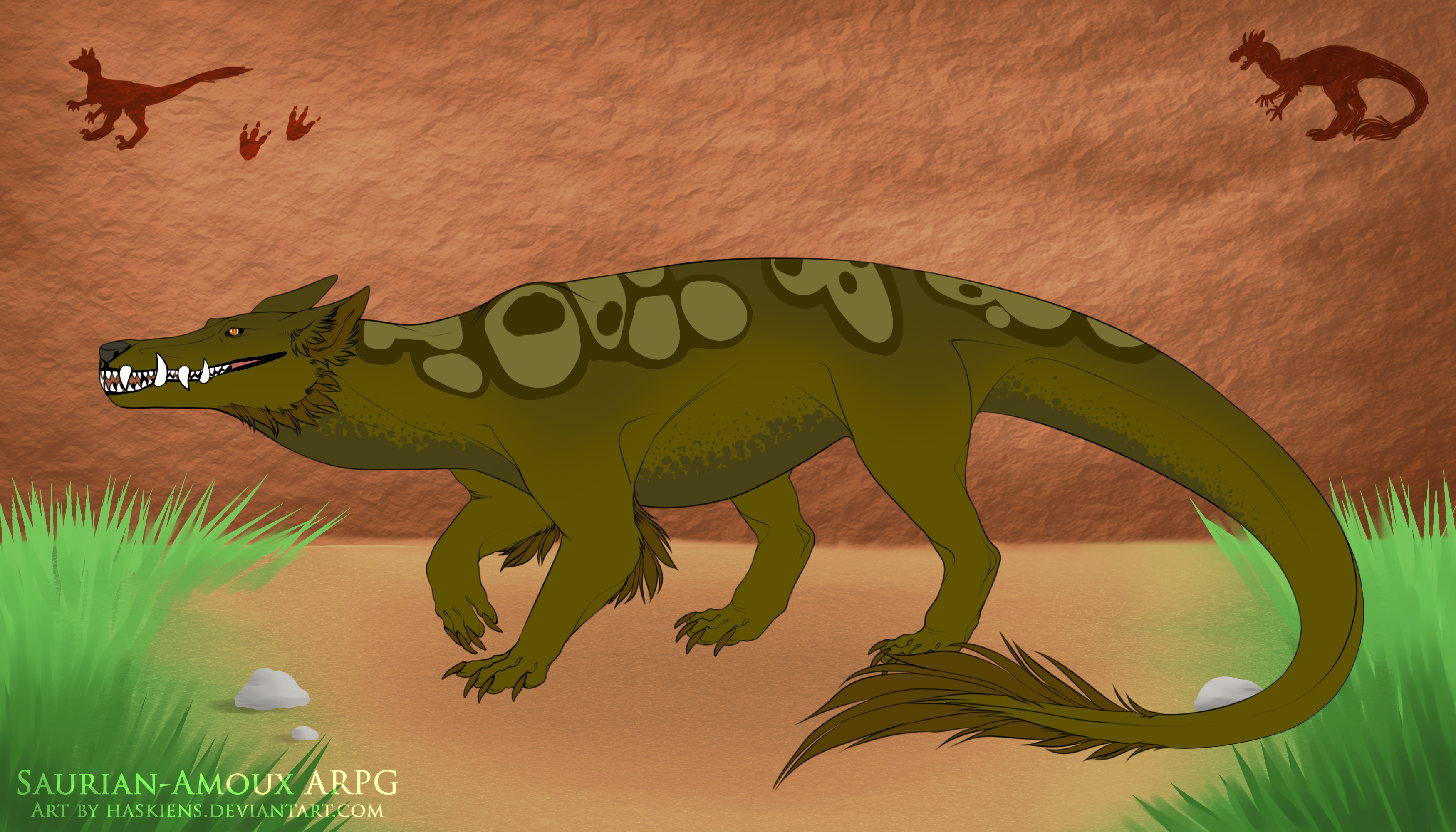
Suchus
Suchus crocodyl
Suchus, to other Verians, is often stereotyped as being the least 'civilized' of the breeds. They originate from deep inside vast swampland, thus being relatively disconnected from most other civilization until recently. They have a rich culture, however, filled with arts, music, and crafts unique to the region they hail from. Prehistoric Suchus rarely communed save for basking in the sun together and that social attitude can be seen in many Suchus even today, only adding to the negative stigma surrounding the breed.
- Average Height: 8 feet
- Smallest Height: 5 feet
- Tallest Height: 10 feet
- Clutch Size: 1-4 eggs
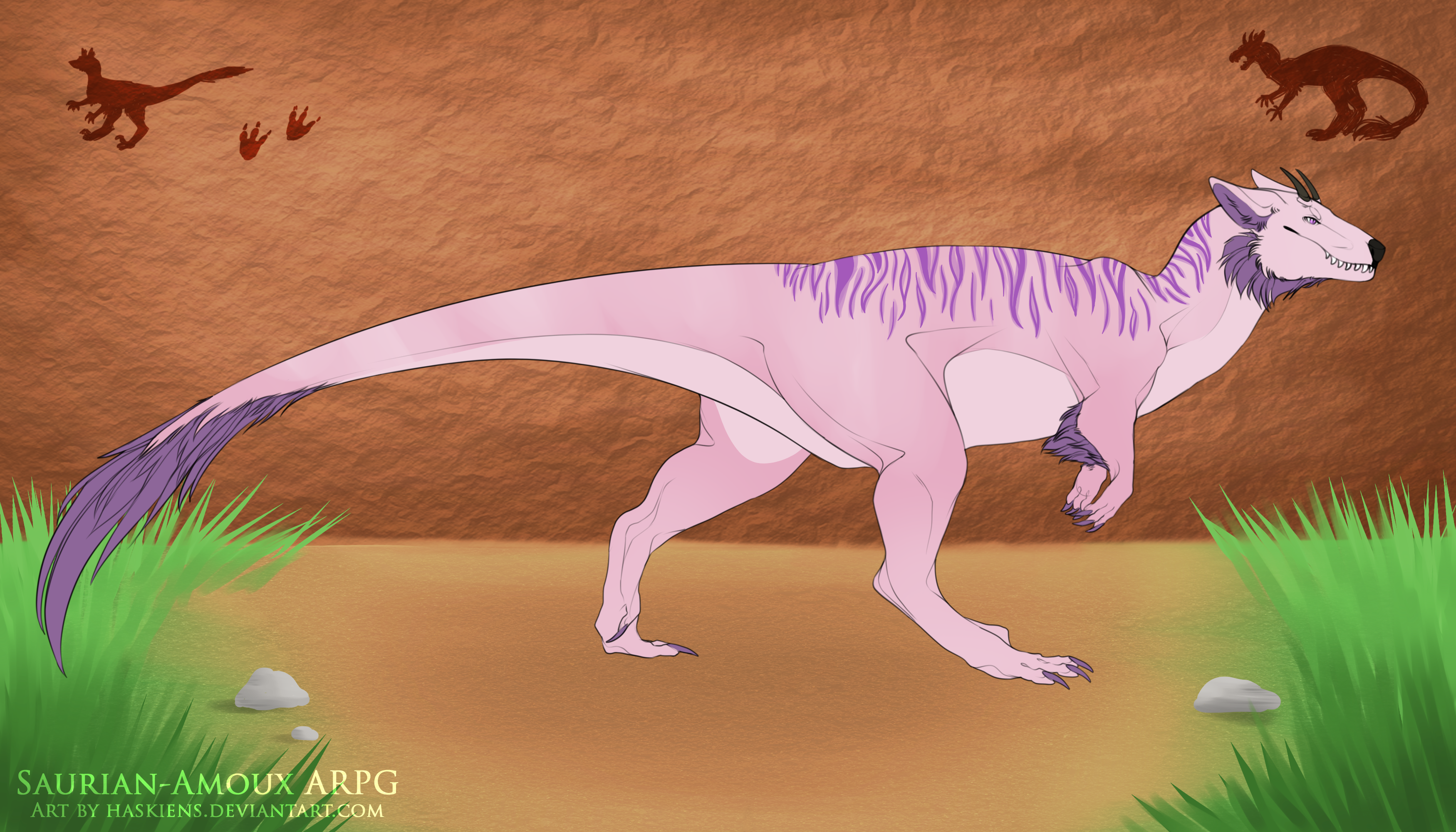
Torvo
Theroas torvorius
It is said that ancient Torvos were aggressive, brutal animals who specialized in dispatching their prey through vicious means. Today, however, they are known as being one of the most determined, focused breed among Verians. Although all Verians often engage in "primitive" behaviors, Torvos are most known for taking it to the extreme. Whether it is hunting without tools, hiking on treacherous terrain, or even going off the grid entirely, it has been said it is most likely a Torvo is involved.
- Average Height: 8 feet
- Smallest Height: 7 feet
- Tallest Height: 9 feet
- Clutch Size: 1-2 eggs
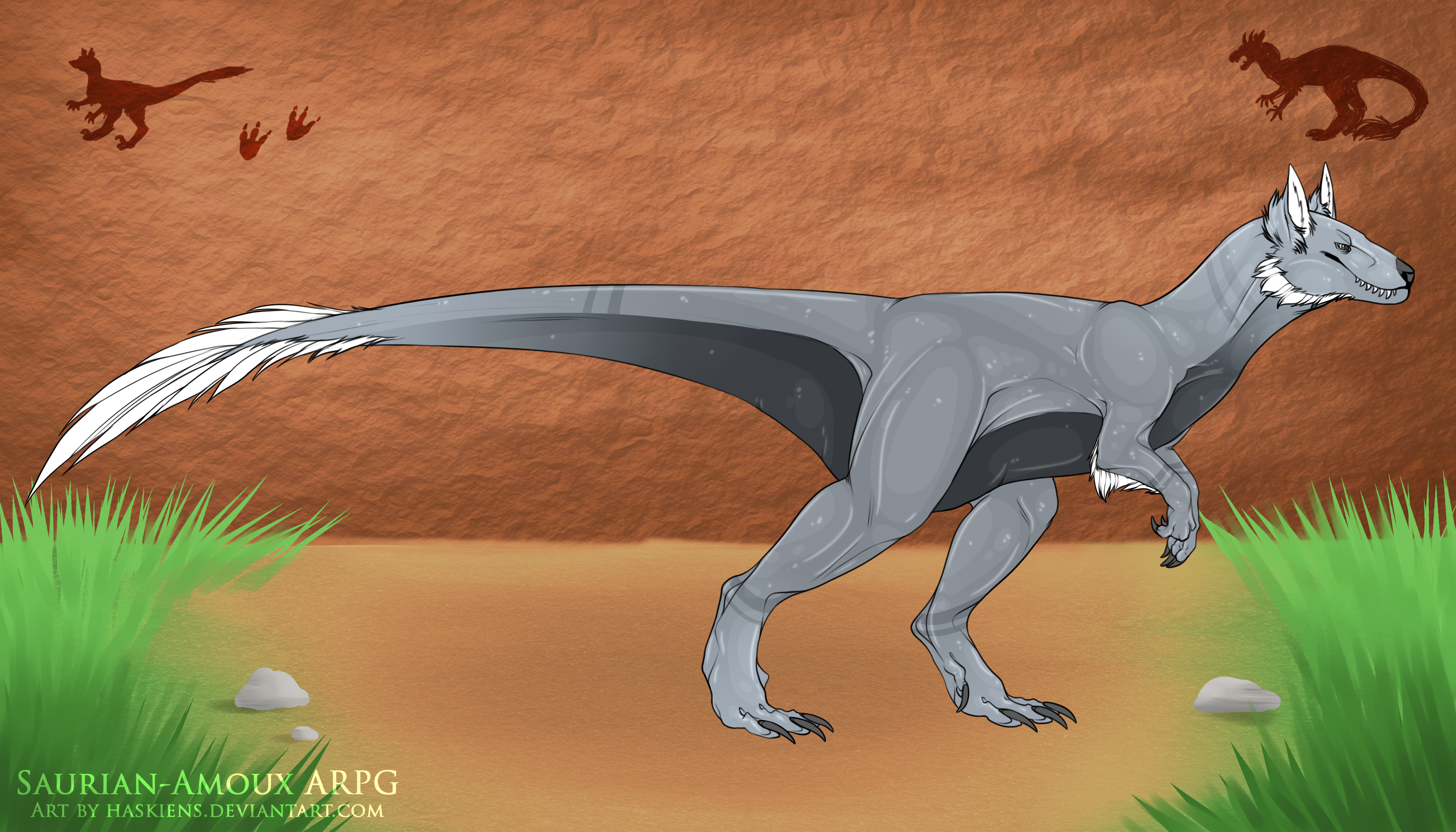
Saharus
Suchus crusrectus
Believed to be a distant relative of the Suchus breed, Saharus are a breed that primarily reside in warm and dry locations. Due to their solitary nature, they had not been seen in years and were believed to be a breed lost to time, but recent sightings have proved otherwise. Though little is still known about them, they have proven to be a hardy and loyal breed, with their body able to adapt to quadrupedal and bipedal stance to traverse different terrain. They seem content in larger groups but prefer to keep to themselves as they explore into areas that are harder for other breeds to reach.
- Average Height: 5 feet
- Smallest Height: 4 feet
- Tallest Height: 7 feet
- Clutch Size: 1-3 eggs

Herculean
Theroas lythro
These are the gentle giants of known Verian culture. Despite having been one of the apex predators in ancient times, today they stand as one of the more prestigious breeds on Thoveria. They are known to be relaxed, easy going animals who adapt to nearly every situation without trouble. This hails back to their roots, where Herculeans would roam vast territories while looking for food - often scavenging rather than hunting. Part of their mystique is that many in the current day are more reserved, having originated from a breed which in ancient times only came together to mate or fight for territory.
- Average Height: 12 feet
- Smallest Height: 9 feet
- Tallest Height: 15 feet
- Clutch Size: 1-2 eggs